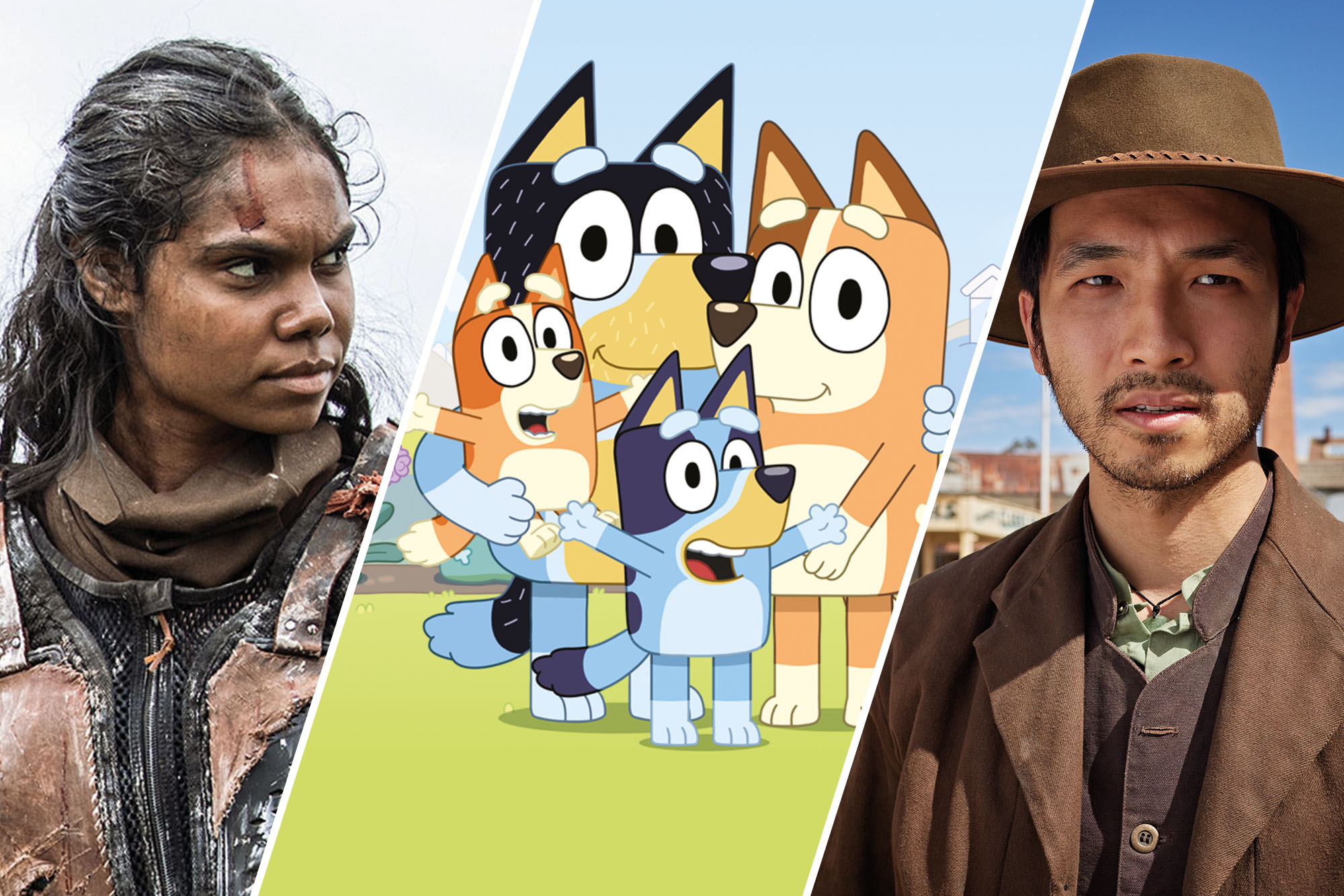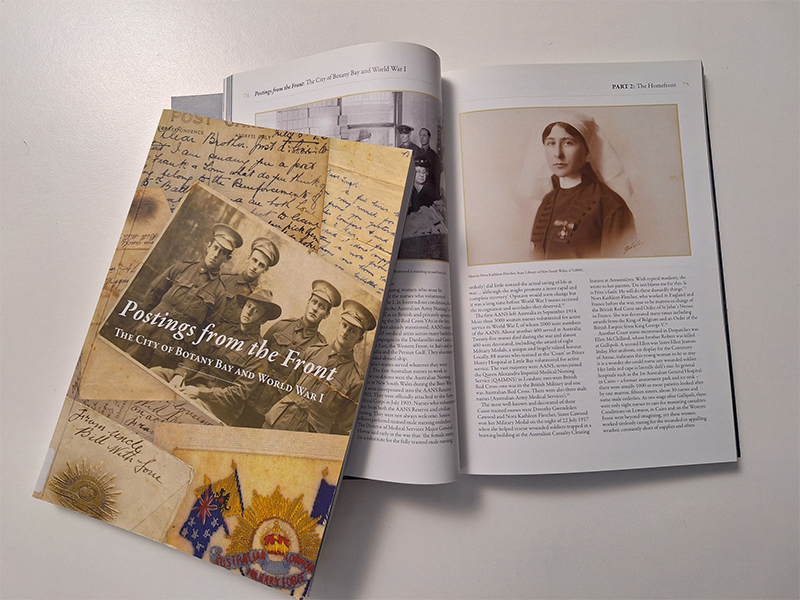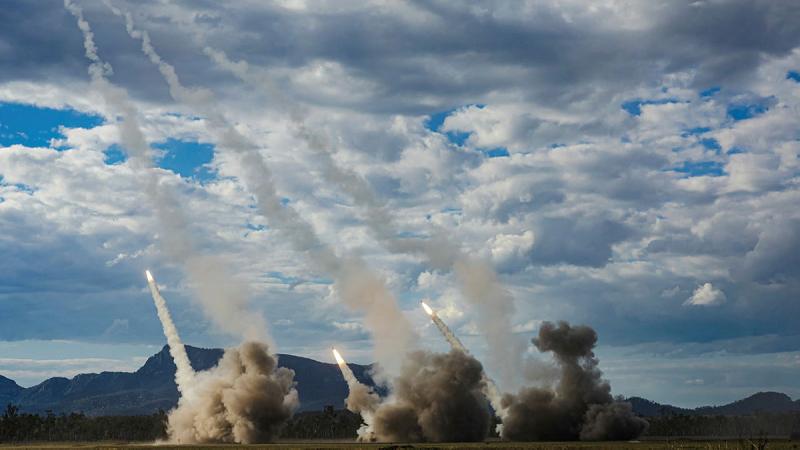Screen Australia’s 31st annual Drama Report released today shows a record-breaking level of expenditure on drama production in Australia in 2020/21 of $1.9 billion, made up of $874 million on Australian projects and $1.04 billion on foreign projects produced or post-produced in Australia.
The unprecedented result – nearly double last year’s spend, and more than 50% above the five year average – was driven by a range of factors, including: projects postponed into the year by COVID shutdowns; low levels of COVID-19, the attractiveness of Australia as a production destination, the strength of local production teams and infrastructure; foreign titles encouraged into Australia by key Australian creatives; and a strong slate of new Australian projects.
Minister for Communications, Urban Infrastructure, Cities and the Arts, the Hon Paul Fletcher MP, said people working in the screen sector should be proud that despite the challenges of the pandemic, the sector enjoyed a record year in 2020/21.
“It is pleasing that the production of local Australian content has had its biggest year, in addition to Australia’s notable success attracting foreign productions, which have provided valuable jobs and training opportunities to the industry,” Minister Fletcher said.
“This achievement reflects the hard work and skills of our screen professionals and the talent of our storytellers, along with the success of the targeted incentives with which the Morrison Government supports this key industry.”
Screen Australia’s CEO, Graeme Mason said, “It’s important to look at both of the production years that were hit by the pandemic. We were on track to break records in 2019/20, and what we are seeing now is the hard work of the Australian industry, who adapted and continued to work through COVID, paying off.
“It’s simply unprecedented to have 10 big foreign productions shooting here in Australia, and especially notable that so many had key Australian creative involvement. From Chris Hemsworth starring in Thor: Love and Thunder and Escape from Spiderhead, to Bruna Papandrea, Nicole Kidman and others bringing the adaptation of Liane Moriarty’s Nine Perfect Strangers to Australia. A mix of local and global talent and finance drove this extraordinary result. Australia cemented its reputation as a leading destination for international productions in 2020/21, thanks not only to our world-class cast, crew, facilities and stunning physical locations and Australia’s lower rates of COVID-19 but also due to the incentive and investment framework supported by the Federal, state and territory governments.”
“For the first time in this report we can see the specific role of SVOD investment, where spend on Australian titles reached $116 million in 2020/21. Over the past five years we have seen average production budgets for Australian SVOD drama expand from $800,000 in 2016/17 to $13.5 million in 2020/21. Spend and cost are just one of several measures of drama production, but it is worth noting that spend on Australian SVOD drama has grown and that the combined spend on drama by FTA and SVOD platforms is at similar levels as that traditionally spent by the FTA sector alone.”
The 95 Australian titles that began production in 2020/21 generated $874 million of spend in Australia, up 57% on 2019/20’s result and setting a new record for spend by Australian titles. This included a record $125 million on local online drama titles, up 20% on last year. Australian local titles accounted for 46% of the total expenditure in Australia.
63 foreign backed projects (including PDV-only titles) generated $1.04 billion spend, more than double that of 2019/20 and a new record for spend in Australia by foreign titles. This included a record spend of $793 million on three features, two TV dramas and five online dramas that commenced shooting in Australia. Spend on foreign PDV-only titles (titles that only had post, digital and visual effects activity in Australia) also reached a record $246 million, up 48% on 2019/20’s result.
!function(e,i,n,s){var t=”InfogramEmbeds”,d=e.getElementsByTagName(“script”)[0];if(window[t]&&window[t].initialized)window[t].process&&window[t].process();else if(!e.getElementById(n)){var o=e.createElement(“script”);o.async=1,o.id=n,o.src=”https://e.infogram.com/js/dist/embed-loader-min.js”,d.parentNode.insertBefore(o,d)}}(document,0,”infogram-async”);
Of the $1.9 billion total spend in Australia, New South Wales and Queensland achieved record spends in 2020/21, with 48% ($912 million) and 29% ($553 million) of the national share respectively. Spend in Victoria dropped slightly to $307 million, while South Australian spend reached $96 million – a reduction on last year’s record year, which was driven by production of Mortal Kombat. Spend in Western Australia dropped to $29 million, while the combined spend in the Australian Capital Territory, Tasmania and the Northern Territory tripled to $18 million.
The Drama Report uses data from industry to provide an overview of the production of local and foreign feature, television and online drama titles, as well as post, digital and visual effects (PDV) activity. All production expenditure is allocated to the year in which principal photography began. PDV employs a secondary method of analysis, which is outlined in the PDV section below, and in the report. ‘Drama’ refers to scripted narratives of any genre.
FEATURES
Spend on Australian feature productions reached $500 million, more than double last year’s spend, and 57% above the five-year average. 42 titles commenced production with 38 domestic features including Baz Luhrmann’s Untitled Elvis Project, Gold, Seriously Red, and Three Thousand Years of Longing, as well as four Official Co-productions – Carmen, We Are Still Here, Mia and Me: The Hero of Centopia and Nude Tuesday.
Feature productions combined had total budgets of $524 million, with the largest proportion (81%) being made for under $10 million. The proportion of features being made in the sub-$1 million range continues to decline, while production in the $1-10 million range has increased steadily over the last five years.
!function(e,i,n,s){var t=”InfogramEmbeds”,d=e.getElementsByTagName(“script”)[0];if(window[t]&&window[t].initialized)window[t].process&&window[t].process();else if(!e.getElementById(n)){var o=e.createElement(“script”);o.async=1,o.id=n,o.src=”https://e.infogram.com/js/dist/embed-loader-min.js”,d.parentNode.insertBefore(o,d)}}(document,0,”infogram-async”);
GENERAL TELEVISION
In 2020/21, Australian general TV drama production spend was up 7% year-on-year, with $201 million spent on 21 general TV drama titles that commenced production. 329 hours of content were generated and all titles had combined budgets of $203 million. This does not include titles produced for a first release on subscription video on demand (SVOD) and broadcaster video on demand (BVOD) platforms, or children’s drama, which are reported separately below.
Production of mini-series increased significantly from last year, with titles up 38%, hours up 28%, budgets up 29% and spend up 27%. Projects included RFDS (Seven), Amazing Grace (Nine), Fires and The Newsreader (ABC), and New Gold Mountain and The Unusual Suspects (SBS).
For television series and serials, hours, budgets and expenditure were all down by 10% on 2019/20, with cost-per-hour holding comparatively stable. Titles that entered production in 2020/21 included How to Stay Married series 3 (Ten), Metro Sexual (Nine), Aftertaste, Fisk and Preppers (ABC) and Australia’s Sexiest Tradie (Seven). Home and Away (Seven) and Neighbours (Ten) were major contributors to data in this category.
CHILDREN’S TELEVISION
Seven children’s titles entered production in 2020/21, down from 14 in 2019/20. Hours, budgets and spend were all down on the previous year – by 56%, 23% and 6% respectively. The produced titles had high production values, with cost-per-hour increasing by 74%, sitting 53% above the five-year average. The decrease in hours and increase in cost per hour reflects a general reduction in the number of hours of lower cost children’s content.
Of the seven titles, the ABC financed six, including animations Bluey series 3 and The Strange Chores series 2, and live action titles Born to Spy, Hardball series 2, Itch series 2 and MaveriX. The remaining title Dive Club, was financed by Network 10 and Netflix.
Children’s titles that were first released on SVOD and other online platforms are included in the Online section, discussed below.
 Wyrmwood: Apocalypse, Bluey, New Gold Mountain
Wyrmwood: Apocalypse, Bluey, New Gold Mountain
ONLINE
The Drama Report classifies online drama as single episode or series titles with total durations of 30 minutes or more that have premiered in Australia online. Online titles can premiere on social platforms such as YouTube and Facebook, SVOD platforms such as Stan and Netflix, transactional video on demand services such as iTunes, and BVOD platforms such as ABC iview.
The online sector continues to grow rapidly. 2020/21’s total spend of $125 million was nearly five times that of 2016/17, the first year online drama was measured separately in the Drama Report.
In 2020/21, 25 titles were first released online, 22 of which were series and three single-episode titles. While hours decreased by 17% year-on-year, budgets increased by 22%, spend by 20% and cost-per-hour increased by 46%, exceeding the cost-per-hour of general Australian TV drama miniseries.
Returning titles included Superwog (ABC iview), while Ms Fisher’s MODern Murder Mysteries was released by Acorn TV. New titles included Alice Miranda: A Royal Christmas Ball, Bump which has already been renewed for seasons 2 and 3, Eden, A Sunburnt Christmas, The Tourist and Wolf Like Me (all on Stan), Surviving Summer (Netflix), Iggy & Ace and The Tailings (SBS On Demand), and The Moth Effect (Amazon Prime).
For the first time, the Drama Report includes a five-year review of the evolution of Australian drama on SVOD services. Between 2016/17 and 2020/21, 29 Australian drama titles were produced for first release on SVOD platforms, generating 115 hours of Australian content. Of these, 18 were released on Stan and five on Netflix, with the remainder released across Amazon, Acorn TV and Presto. In 2016/17, the average budget for a title was $800,000 and by 2020/21, it had risen to $13.5 million. The cost-per-hour has also risen, from $530,000 in 2016/17 to $3.3 million in 2020/21. In recent years, the Australian SVOD slate has consisted of low, medium and higher-cost titles, including a small number of titles with very large budgets. Please note this SVOD data excludes foreign titles produced in Australia, and titles first released elsewhere, such as in cinemas or on broadcast television.
!function(e,i,n,s){var t=”InfogramEmbeds”,d=e.getElementsByTagName(“script”)[0];if(window[t]&&window[t].initialized)window[t].process&&window[t].process();else if(!e.getElementById(n)){var o=e.createElement(“script”);o.async=1,o.id=n,o.src=”https://e.infogram.com/js/dist/embed-loader-min.js”,d.parentNode.insertBefore(o,d)}}(document,0,”infogram-async”);
FOREIGN PRODUCTION
Spend on foreign led shoot and PDV-only titles totaled a record $1.04 billion in 2020/21. Spend on foreign titles that were filmed in Australia reached $793 million, making up 76% of the total foreign spend, and spend on PDV-only titles rose to $246 million.
Three foreign features commenced shooting in Australia in 2020/21, bringing $319 million in expenditure, which was a 44% increase on 2019/20. These features were Blacklight, Thor: Love and Thunder and Thirteen Lives. PDV-only feature expenditure totalled $190 million in 2020/21, more than six times 2019/20’s spend. 19 features contributed to the result including The Shrinking of Treehorn, Doctor Strange in the Multiverse of Madness and The Batman.
Foreign TV and online drama accounted for $530 million in Australian expenditure in 2020/21, another area that was more than double last year’s result. Foreign titles shot in Australia included Escape from Spiderhead, God’s Favorite Idiot, La Brea and Nine Perfect Strangers, and PDV-only titles included US titles I Am Groot, The Book of Boba Fett, Rainbow High series 1 & 2 and WandaVision.
The Australian dollar typically traded at around USD $0.75 in 2020/21. In July 2020, the Australian Government increased funding to the Location Incentive program by $400 million over seven years, and it supported nine foreign dramas that entered production in 2020/21. Productions were also assisted by the federal Location Offset, as well as state government support. Increased PDV-only activity was supported by the Australian Government’s 30% PDV Offset, additional rebates in New South Wales, Queensland, South Australia, and Western Australia, and grants offered in Victoria.
COVID-19 will disrupt some foreign production in Australia into 2021/22, as the sector and the country continues to adapt to the ongoing challenges of the pandemic, however several high profile titles are either currently underway or slated to begin, including Joe Exotic, Nautilus, Ticket to Paradise, Woody Woodpecker and Young Rock series 2. New studio facilities are being considered or under construction in locations around the country, including in Perth, Melbourne, Canberra, Western Sydney, northern New South Wales and Cairns.
POST, DIGITAL AND VISUAL EFFECTS (PDV)
To provide a sense of the ongoing business activity of PDV companies in a given financial year, the PDV Services section of the Drama Report uses a different data timeline to the rest of the document. In this section, a project’s total PDV spend is reported as it occurs, rather than attributing the whole amount to the year in which work commenced. The data cannot be compared to that presented in other sections of the Drama Report.
PDV expenditure on Australian and foreign drama titles in 2020/21 totalled $327 million, down 5% on 2019/20, but 10% above the five-year average ($296 million). Driving the result was a PDV spend of $142 million on foreign PDV-only titles, up by 12% on 2019/20, and 19% above the five-year average. PDV expenditure on foreign shoot titles for 2020/21 totalled $58 million, up 61% on 2020/21 and 95% above the five-year-average.
PDV expenditure on Australian titles including Baz Luhrmann’s Untitled Elvis Project and Three Thousand Years of Longing, was $127 million, down 30% on 2019/20 and 14% below the five-year average.
SCREEN AUSTRALIA
Screen Australia’s Annual Report was tabled in Parliament on 21 October 2021, and detailed that the agency provided more than $42 million in production funding for drama titles in 2020/21. That included $15.9 million for general television drama, $9 million for features, $10.7 million for children’s television, $4.5 million for online drama productions and $2.7 million for First Nations productions.
A further $22.6 million of additional funding was injected into the industry in 2020/21 for drama development, documentary, talent development, distribution, international marketing, festivals and guild assistance.
Screen Australia also administers the Producer Offset on behalf of the Australian Government. In 2020/21, Producer Offset Final Certificates were issued to 118 projects, worth a total of $175.1 million.
Screen Australia continued to assist with the challenges presented by COVID-19. This included providing over $7.5 million of funding in 2020/21 through the COVID-19 Budget Support Fund to cover additional costs for green-lit productions to implement their COVID Safety and Risk Assessment Plans to allow them to go into production safely.
Screen Australia also administered the $50 million Temporary Interruption Fund, which supported 58 projects with total combined budgets of $411.5 million; as well as the $20 million Supporting Cinemas’ Retention Endurance and Enhancement of Neighbourhoods (SCREEN) Fund, which supported 158 cinemas in 2021 that had experienced significant declines in revenue due to COVID-19
The Our Summer of Cinema campaign initiated by Screen Australia shone a light on cinemas and led to significant success for local content. The Dry grossed $20.7 million at the Australian box office, family drama Penguin Bloom reached $7.5 million, thriller High Ground grossed more than $3 million, and those three films shared the top three spots at the box office in February 2021. Feature documentary Firestarter – The Story of Bangarra was showcased ahead of its theatrical release and was then broadcast on the ABC during NAIDOC Week 2021.
As part of the 2020/21 Federal Budget, additional funding was announced for eight national cultural institutions, with $1.1 million provided to Screen Australia. Screen Australia also received $30 million over two years to support the production of local content and an additional $3 million over three years to cultivate quality screenwriting and script development. With this increased funding, Screen Australia supported the Talent Gateway program and Global Producers Exchange








